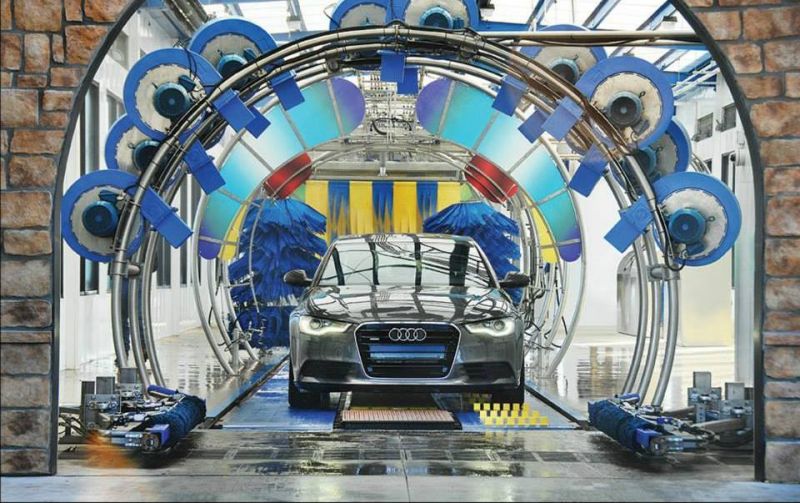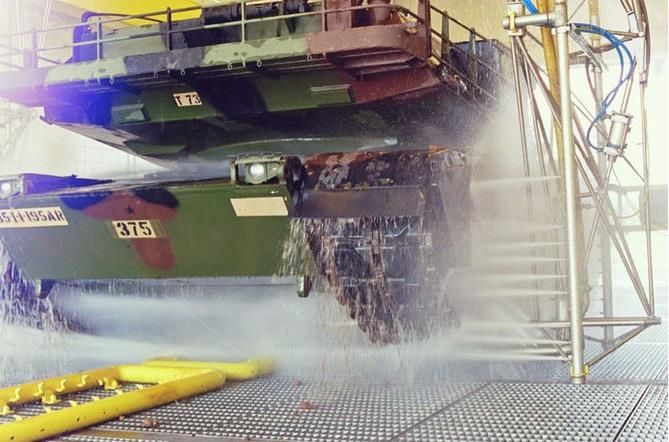Sustainable Car Wash Reclaims Water ‘From Drain to Wash’
Published on by Water Network Research, Official research team of The Water Network in Business
'Tommy’s Express Car Wash' from San Antonio will be the first LEED certified car wash in Texas and the first fitted with a proprietary water reclamation system using technology widely in use in Europe.

COURTESY / ALAMO WASH SYSTEMS The first LEED certified car wash that also uses cutting-edge water reclamation technology will open in October.
Alamo Wash Systems , which produces a water treatment car wash system using Rotating Bed Biofilm Reactor (RBBR) technology, is partnering with Windmeer Enterprises to open the car wash over the Edwards Aquifer Recharge area at U.S. Highway 281 North and Marshall Road.
Alamo Wash Systems specializes in water reclamation, the process of converting wastewater into water that can be reused for other purposes. Denis Brown, president of Alamo Wash Systems, is partnering with Nicolaas Blom of Windmeer Enterprises, the local developer who will operate the new car wash location.
“With this system we can reclaim up to 90% of the water used to wash each car, typically anywhere from 60-70 gallons at a traditional car wash,” Brown said. “The standard in the industry for reclamation is around 50%.”
“As a result of Windmeer’s commitment to sustainability and environmental practices, they are investing heavily in this location,” Brown said. “With its LEED certification, energy efficient systems, and eco-friendly technologies that include the RBBR water reclaim system, they expect a direct return on investment for both the environment and its investors.”
In addition to its technology for reclaiming water, the car wash is designed to be energy efficient.
“We also use 60-70% less energy consumption than what is used at typical car washes,” Brown said.
RBBR Water Reclamation Differentiates Itself from Other Methods

COURTESY IMAGE FROM ALAMO WASH SYSTEMS The RBBR water reclamation technology is used to wash an Abrams tank
As cars are washed, solids such as dirt and mud come off, fill the holding tanks, and reduce the amount of water that can be reclaimed. The car wash water also carries pollen, bird droppings, and bacteria. Almost every current car wash reclamation system uses mechanical filtration to separate solids from water, then treats the water with ozone. Sometimes called activated oxygen, ozone is considered the second strongest oxidizer in the world and is sometimes used for disinfecting and sterilizing.
Current ozone systems, however, are not scaled large enough to treat the volume of water used in a car wash.
“This process to treat water becomes very expensive, time-consuming, and financially unsustainable over time,” Brown said. “One tablespoon of dirt contains over 1 billion bacteria [particles], and at a car wash you wash off much more than one tablespoon per vehicle.”
Other car washes that reclaim water deal with the bacterial load by sterilizing the used water to prevent odors from developing. Chemically sterilizing the water by using chlorine or other chemical compounds interferes with the soaps’ ability to clean. UV light can sterilize water only if the water is clear enough so it can reach the entire flow of water passing through – and dirty car wash water is not clear.
Instead, Alamo Wash Systems uses a rotating bed biofilm reactor that treats the bacteria in the water, much like wastewater treatment plants use established colonies of microorganisms to break down bacteria safely.
Alamo Wash Systems has combined its reclaim system with a mechanical delivery system customized for car washes to provide an economical, ecological, and sustainable option for reclaiming water.
Read more: The Rivard Report
Media
Taxonomy
- Treatment
- Water Footprint
- Sustainability
- Water Management
- Consumption
- Water Resource Management
- Energy Consumption